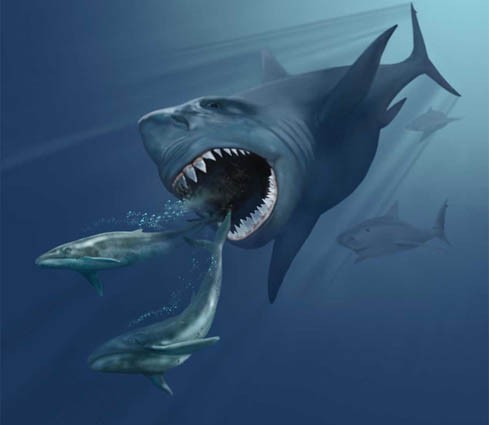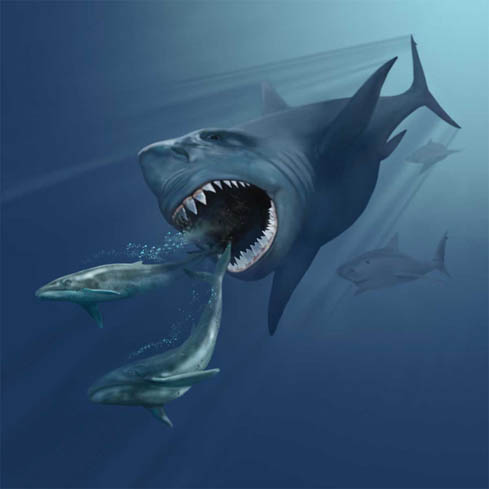Megalodon might have gone extinct because of its weakness for tiny whales

The mighty megaladon might have gone extinct because of its fondness of eating little whales, scientists have suggested. By analysing fossils of marine mammals from the upper Miocene period, a team of researchers has shown what Carcharocles megalodon was feeding on just before they died off an estimated 2.6 million years ago.
Megalodons were the biggest sharks to have ever lived. They could reach up to 60ft in length and had jaws around nine feet wide. They first emerged 28 million years ago, but as the oceans began to cool the species began to decline, eventually disappearing from the sea altogether.
Several theories have been put forward as to why they became extinct, including environmental factors, a decline in food supply and being outcompeted by new, emerging marine predators. However, a lack of fossil evidence means establishing what caused their decline is extremely difficult.
A team of researchers led by Alberto Collareta, from the University of Pisa, has now analysed remains discovered in southern Peru that had clearly been chewed on by a megalodon. Publishing their findings in the journal Palaeogeography, Palaeoclimatology, Palaeoecology, the team say this is the first time we have ever been able to identify the exact species that megalodon was hunting or savaging.
The remains were collected from the upper Miocene deposits in the Pisco Formation. "The bitten material includes skull remains referred to small-sized baleen whales as well as fragmentary cetacean and pinniped postcrania," they wrote.
"Due to the fragmentary nature of the studied material, the exact origin of the detected marks (i.e., by scavenging or by active predation) cannot be ascertained. Nevertheless … we propose that [these small whales] were some of the target prey of adult C. megalodon, at least along the coast of present-day Peru."
They said that the megalodon preying on such small animals may have contributed to its decline. The whale species started dying out around three million years ago — the colder climate led to a fall in sea levels, impacting the coastal environments in which they lived. As its prey began to die out, so too did the megalodon.
"The disappearance of the last giant-toothed shark could have been triggered by the decline and fall of several dynasties of small to medium-sized baleen whales in favour of modern, gigantic baleen whales," Collareta told New Scientist.
Политика конфиденциальности | Правила пользования сайтом








